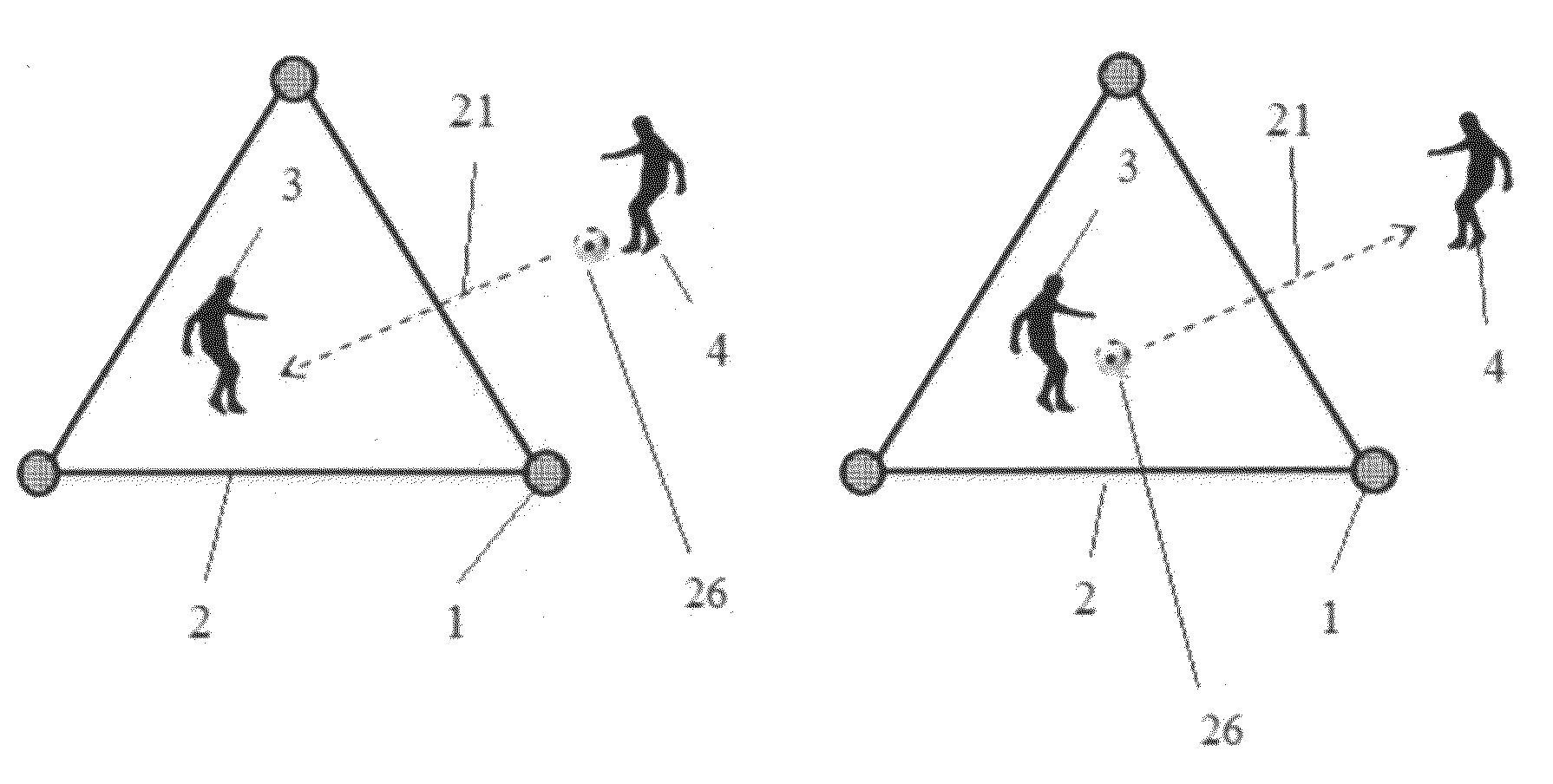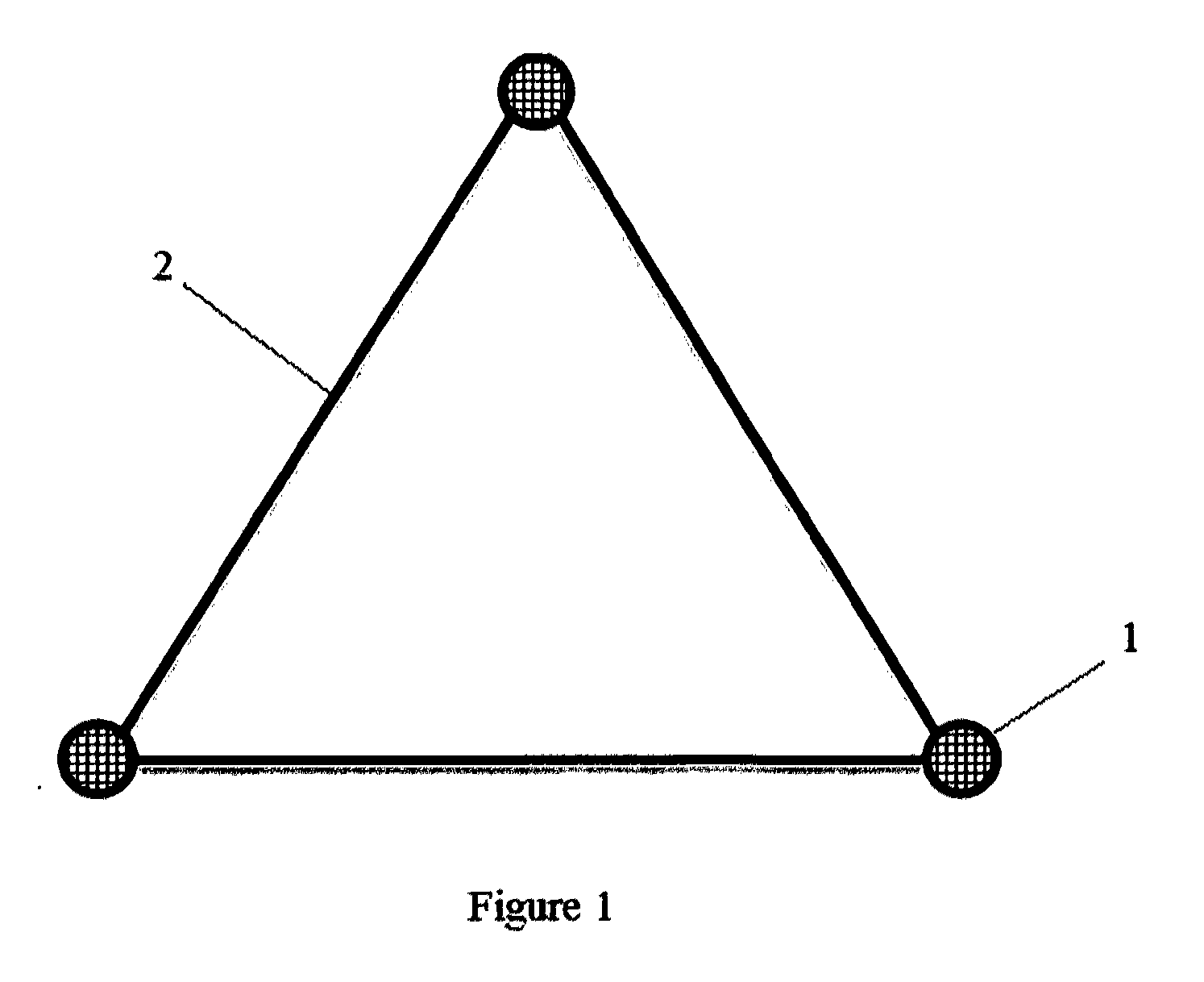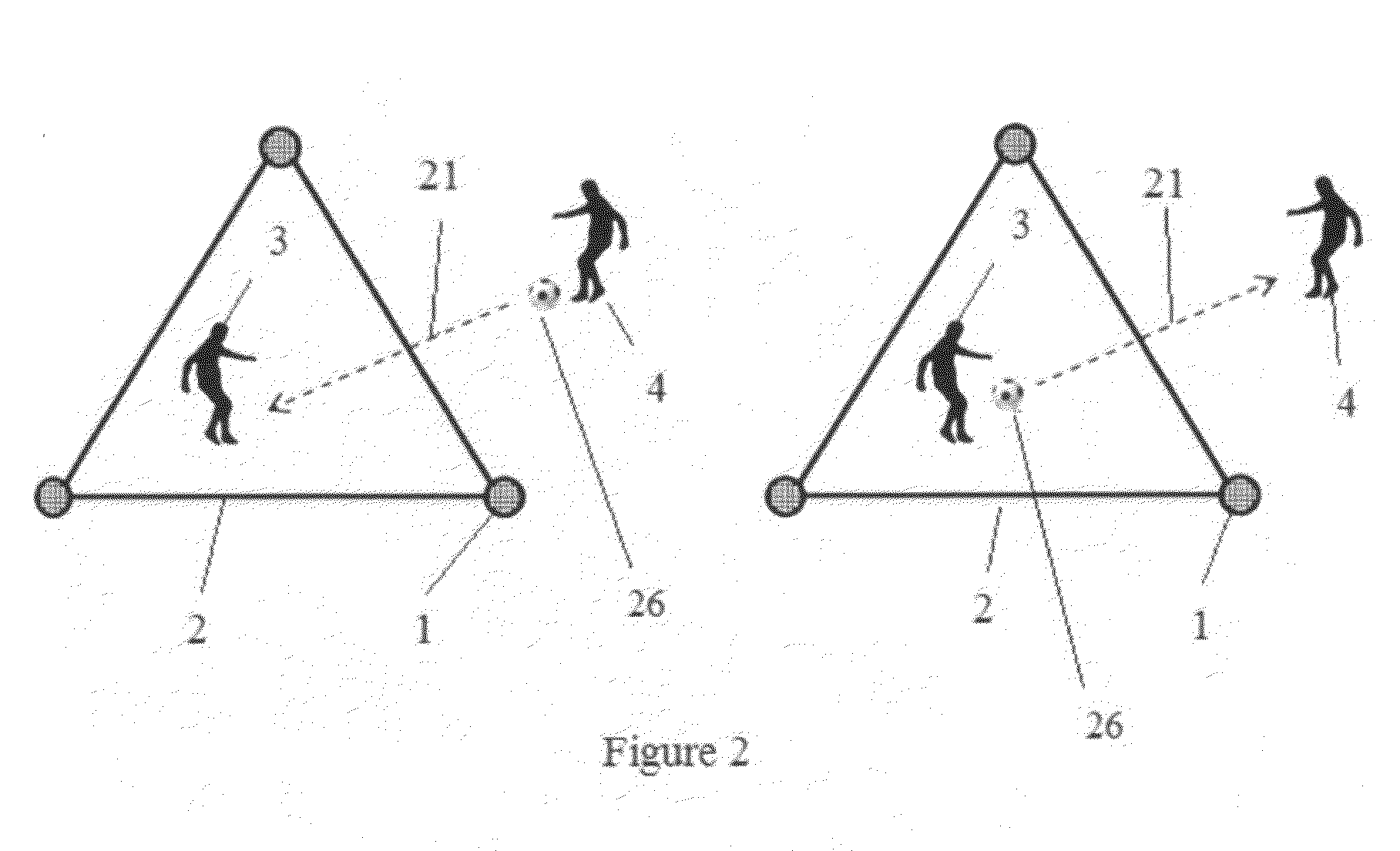Soccer passing trainer apparatus and games
a trainer and soccer technology, applied in the field of soccer passing trainer equipment and games, can solve the problems of difficulty in standardized passing drills, confusion, and inability to quickly arrange to precise measurements, and achieve the effects of improving passing, improving soccer skills, and being easy to manufacture and us
- Summary
- Abstract
- Description
- Claims
- Application Information
AI Technical Summary
Benefits of technology
Problems solved by technology
Method used
Image
Examples
Embodiment Construction
[0022]The basic device, consisting of a single triangle, is shown in FIG. 1. The triangle is laid out on the ground demarcating two regions: interior and exterior of triangle. The triangle is held in place with stakes 1 that penetrate the ground, or other means of fastening to a playing surface (e.g. a cone or ring), such as a gym floor. The stakes are linked together by a connection 2 such as webbing or rope.
[0023]The simplest instantiation of the game is shown in FIG. 2. This most basic game uses a single triangle with one player 3 in the interior of the triangle and one player 4 in the exterior of the triangle. A player in the exterior of the triangle passes a ball 26 to a player in the interior of the triangle e.g. via dashed line 21 (left panel of FIG. 2). The interior player must control the ball 26 keeping it inside the triangle. Then the interior player 3 passes the ball 26 back to the player 4 on the outside of the triangle, e.g. via dashed line 21 (right panel of FIG. 2). ...
PUM
 Login to View More
Login to View More Abstract
Description
Claims
Application Information
 Login to View More
Login to View More - R&D
- Intellectual Property
- Life Sciences
- Materials
- Tech Scout
- Unparalleled Data Quality
- Higher Quality Content
- 60% Fewer Hallucinations
Browse by: Latest US Patents, China's latest patents, Technical Efficacy Thesaurus, Application Domain, Technology Topic, Popular Technical Reports.
© 2025 PatSnap. All rights reserved.Legal|Privacy policy|Modern Slavery Act Transparency Statement|Sitemap|About US| Contact US: help@patsnap.com



